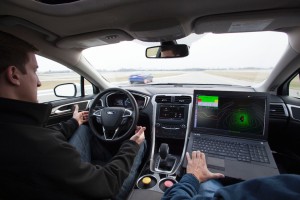
A full conversion to autonomous driving technology could eliminate 90% of traffic fatalities, according to a new report.
New active safety technologies could reduce road accidents in the United States by more than one third, saving thousands of lives and billions in societal costs for medical care, vehicle repairs and lost productivity, according to a new study released this week by the Boston Consulting Group.
The study said available systems like automatic braking and lane control assistance technology could reduce the number of accidents by 28%. In addition, wider use of the new technologies could pave the way for fully autonomous vehicles and lead to a 90% reduction in fatal accidents over time.
“Because the vast majority of crashes in the United States are caused by driver error, the lack of adoption of these technologies within the vehicle fleet in the United States is a significant missed opportunity,” said BCG’s Xavier Mosquet, who co-authored the report funded by the Motor & Equipment Manufacturers Association.
The report noted approximately 33,000 people are killed and 3.9 million injured each year in automotive accidents in the United States – at a cost to society of $910 billion. The Active Driver Assistance System, or ADAS, technologies could save 9,900 lives and $251 billion in societal costs.
Mosquet said the study focused on auto features that are available in many vehicles as options now, such as forward collision warning, surround view, adaptive cruise control, blind spot detection, night vision, lane departure warning and parking assist.
(Forget the sound barrier, Bloodhound SSC is aiming at 1,000 mph. For more, Click Here.)
However, adoption of these technologies has been slow because many consumers are unwilling to pay the extra costs, Mosquet said. For example, car owners in a recent survey said they would be willing to pay $100 to $400 for blind spot detection, but the current cost is nearly $600.
“We possess the know-how and technology to save nearly 10,000 lives on America’s roads annually,” said Steve Handschuh, MEMA president and chief executive officer.
“What’s lacking is the urgency to increase consumer education and the political will to get it done today. The way forward should include a mix of federal tax incentives and discounts on insurance premiums to steer consumers toward available safety technologies.”
The study said additional systems are expected to become available in the near future including “traffic jam autopilot,” “highway autopilot with lane-changing,” and “urban available.”
But the report noted “at current adoption rates, making these partially autonomous features affordable to consumers poses a challenge.”
(Click Here for details about VW’s plans to fix diesel cheat in the U.S.)
The technology, which is already available on some cars, uses on-vehicle sensors to detect a possible collision and applies brakes if the driver fails to respond to warning sounds.
Despite the enormous benefits of the technology, Mosquet said that market forces alone won’t increase demand for added safety features since the cost to consumers is relatively steep. Forward collision warnings and braking as well as adaptive headlights are a bit like insurance: its value isn’t apparent until it’s needed, Mosquet observed. The growth of demand is very slow and without stronger demand the costs will remain high, he added.
Mandates are one possible solution. After all, without fuel-economy mandates gasoline would probably be more than $5 per gallon because there would have been no incentive for carmakers to improve the mileage of their vehicles, he said.
But the lobbyists who sponsored the report jumped in to insist mandates were not necessary but other steps, like educating the public, could be used to promote the technology.
(To see why the UAW is threatening to strike a key Ford plant, Click Here.)
Mosquet, however, said fully autonomous cars may not face the same kind of cost challenge because consumers see them as a convenience for which they are quite willing to pay more, Mosquet said.

I love these pie-in-the-sky statistics pumped out to dupe the naïve. No current anti-collision tech won’t reduce the number of accidents by one third and AVs will not reduce fatal accidents by 90% over time. Anyone with a clue knows this is just B.S. to force electronics on consumers. How much will consumers be forced to pay for tech they don’t desire? the answer is: Thousands per year. Why should there be any electronics mandate. We don’t mandate proper driving skills. We allow people to DUI. We allow cellphone operation while driving. We allow distracted driving. We increase the quantity of electronic toys/distractions in new vehicles everyday. Maybe they should save the anti-collision devices for those willing to pay for them and for AVs?
Look at who paid for the “research”. Show us how they reached their statistical conclusions. Are auto accidents a Darwinian balancing process for those who should not be operating a motorized vehicle?
We can’t get the public to spend money to save themselves, money many of them don’t have by the way, so let’s mandate they buy safety. Why are there so many cars older than twelve years on the road? People without money? Maybe.
All the gadgets in the world won’t save you if you don’t wear your seat belt.
Amazingly some people think they are invincible and that they don’t need seatbelts. Eventually many of them like those who ride motorcycles without a helmet, become statistics. The rest of us however pay for their ignorance via higher auto and health insurance costs.